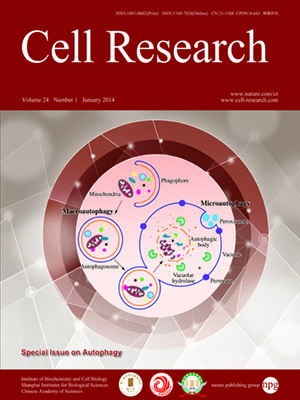
Volume 24, No 1, Jan 2014
ISSN: 1001-0602
EISSN: 1748-7838 2018
impact factor 17.848*
(Clarivate Analytics, 2019)
Volume 24 Issue 1, January 2014: 122-125
LETTERS TO THE EDITOR
Generating rats with conditional alleles using CRISPR/Cas9
Yuanwu Ma1, Xu Zhang1, Bin Shen2, Yingdong Lu1, Wei Chen1, Jing Ma1, Lin Bai1, Xingxu Huang2 and Lianfeng Zhang1
1Key Laboratory of Human Disease Comparative Medicine, Ministry of Health, Institute of Laboratory Animal Science, Chinese Academy of Medical Sciences, Beijing 100021, China
2MOE Key Laboratory of Model Animal for Disease Study, Model Animal Research Center of Nanjing University, Nanjing Biomedical Research Institute, National Resource Center for Mutant Mice, Nanjing, Jiang Su 210061, China
Correspondence: Lianfeng Zhang, E-mail: zhanglf@cnilas.org; Xingxu Huang,(xingxuhuang@mail.nju.edu.cn)
The rat is an important laboratory model and has many advantages over mouse models especially in toxicology and pharmacology studies. Several genome-editing technologies, such as zinc-finger nucleases (ZFNs)1,2, transcription activator-like effector nucleases (TALENs)3 and the Clustered Regularly Interspaced Short Palindromic Repeats (CRISPR)/CRISPR-associated 9 (Cas9) system4,5, have been used to produce knockout rat models by generating DNA double-strand breaks (DSBs) followed by non-homologous end joining (NHEJ)-mediated repair. However, the simple knockout strategies have limits for studying genes that are critical for embryogenesis.
10.1038/cr.2013.157
FULL TEXT | PDF
Browse 3206


